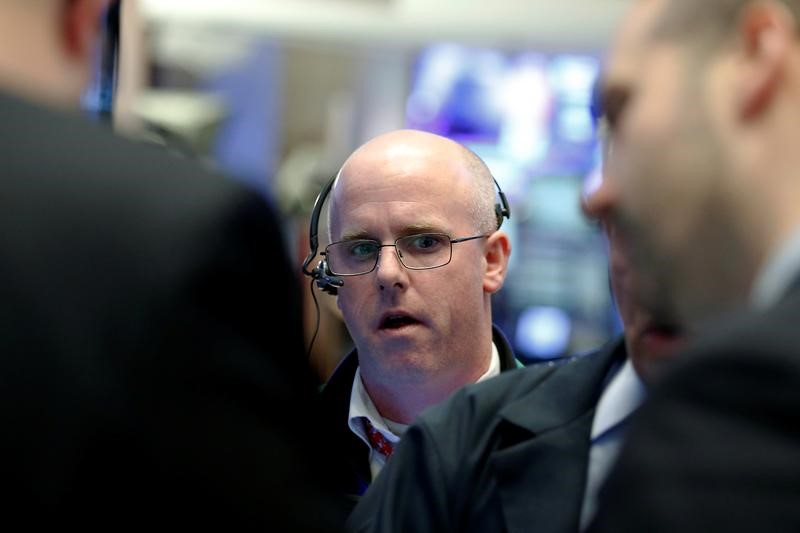By Laura Matthews
NEW YORK (Reuters) – Foreign-exchange investors are moving more of their over-the-counter (OTC) derivatives trades to lookalike products on exchanges to avoid higher costs due to recent global regulations, helping inject transparency into a multitrillion-dollar market that is largely hidden from the public eye.
The growing interest in clearing trades through an exchange comes as regulations capture more users of these contracts, bolstering the need to shift away from bilateral trading and manage rising compliance cost.
“There is more transparency, lower margin requirement overall (in trading listed products), which is a benefit for asset managers and hedge funds in leveraging their positions,” said Ben Feuer, head of FX trading and head of sales trading at Societe Generale (OTC:) in New York.
The gradual behavioral change in FX derivatives trading is being caused by increasing margin and collateral costs, said Joe Midmore, chief commercial officer at OpenGamma, a derivatives analytics firm.
Effective September 2022, buy-side firms with uncleared OTC derivatives totaling at least $8 billion are subject to the regulations – set by the Basel Committee on Banking Supervision and the International Organization of Securities Commissions – and have to ensure there is enough margin to cover the risk of a default by a counterparty to the transaction.
OTC derivatives are privately negotiated contracts while cleared derivatives, though bilaterally negotiated, are booked with a clearinghouse such as a listed exchange. The new margin rules exempt cleared trades.
Higher interest rates make posting margin more expensive.
“Lots of exchange salespeople have been going out to investors for a long time saying ‘look at how much more efficient trading in listed futures is,’ but it didn’t matter until now when interest rates are 5% instead of zero,” said Michael Riddle, CEO at Eris Innovations which partners with the CME Group (NASDAQ:) and other exchanges to develop futures and options products.
The shift is most acute for buy-side firms that have to post margin for the first time, said Paul Houston, head of FX markets at CME Group.
“They will also incur the operational, legal and custody costs of setting up margin facilities as well as the capital costs of posting margin,” Houston said.
CME’s listed FX futures and options market now trades an average daily volume of $85 billion versus $76 billion in 2021, indicating more investors are using exchange-traded derivatives to replace OTC trades where possible.
That is still a fraction of the $7.5 trillion that trades daily in the FX markets, the vast majority of which happens OTC.
British clearing house LCH’s ForexClear also had a record May for FX options, surpassing $200 billion in notional value, meaning the total value of a derivatives trade, for the first time.
“For the buy-side, FX clearing materially lowers counterparty risk, enables portfolio optimization and provides operational benefits,” said James Pearson, head of ForexClear.
GROWING ACCEPTANCE
Some 60 firms started trading FX futures and options at the CME Group for the first time this year, more than two-thirds of which are buy-side clients, according to CME data. Last year, 300 firms were trading new instruments for the first time.
An estimated 775 firms came under the scope of the new rules last September, according to ISDA.
Some clients of Record Financial Group, a specialist currency and asset manager, were exploring listed alternatives while others were adjusting their risk management programs to “stay within or under the regulatory threshold,” said the firm’s head of sales, Tom Arnold.
Joe Spiro, director of product management at Hazeltree, said as a firm’s exposure grows more may have to adhere to the new rules, widening the appeal for trading on exchanges.
Investors can also now transact on a relationship basis as they do in the OTC space and access clearing.
For instance, some 274,000 contracts in privately negotiated blocks and exchange-for-related-positions (EFRPs), products that allow users to trade on a disclosed, relationship basis against their liquidity providers and access clearing, were traded on CME on March 8, up 23% from the previous record in December.
Client clearing of nondeliverable forwards at ForexClear for January to May reached $261 billion, 58% higher than the corresponding period in 2022.
Not all see the need to shift even with higher costs and not all derivative products have a cleared alternative, which limits broader adoption.
Exchange-traded futures contracts have a fixed settlement date relative to OTC forwards, making them unattractive to some investors, said Peter Vassallo, a portfolio manager for the currencies team at BNP Paribas (OTC:) Asset Management.
There are also concerns that pushing more trades to the clearinghouse will consolidate risk rather than reduce it.
“There is inherently risk involved in lots of people transacting derivatives with each other,” said Riddle. “And there is no model that removes all that risk, it only changes where it is, but can mitigate it.”
Read the full article here


